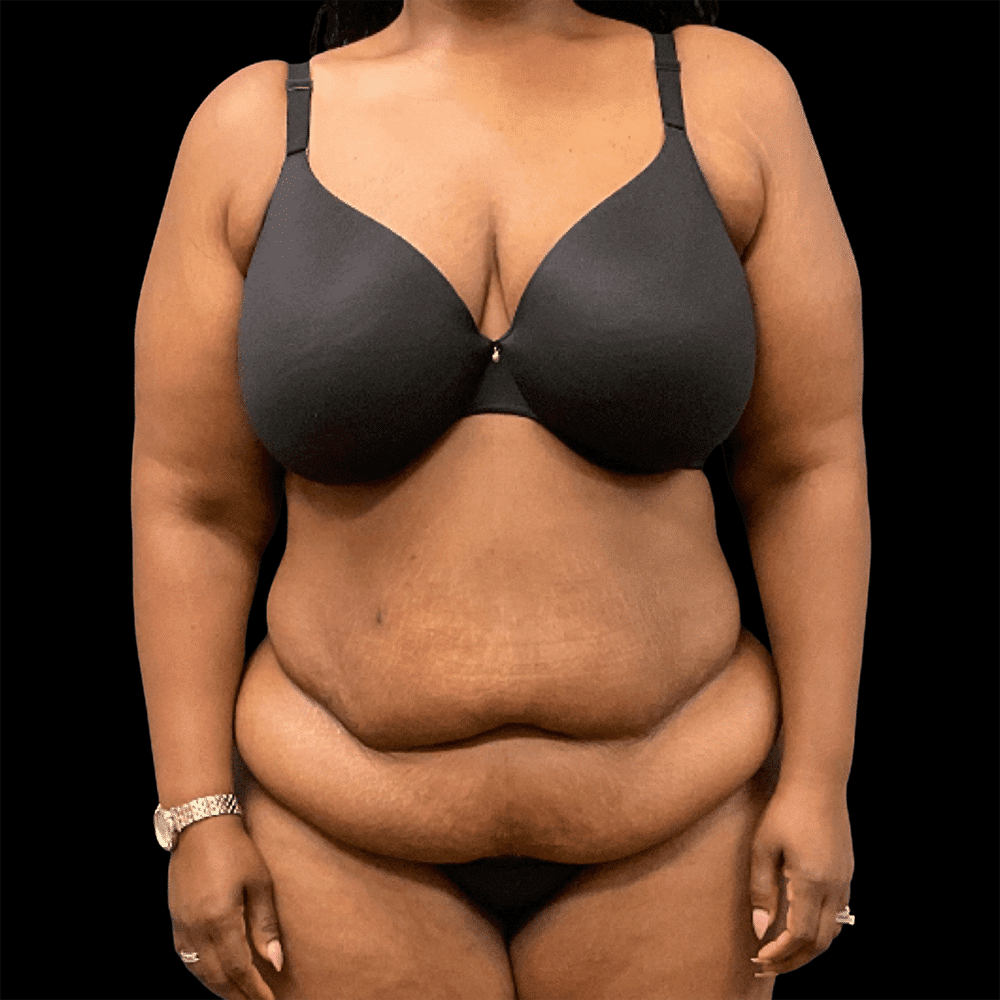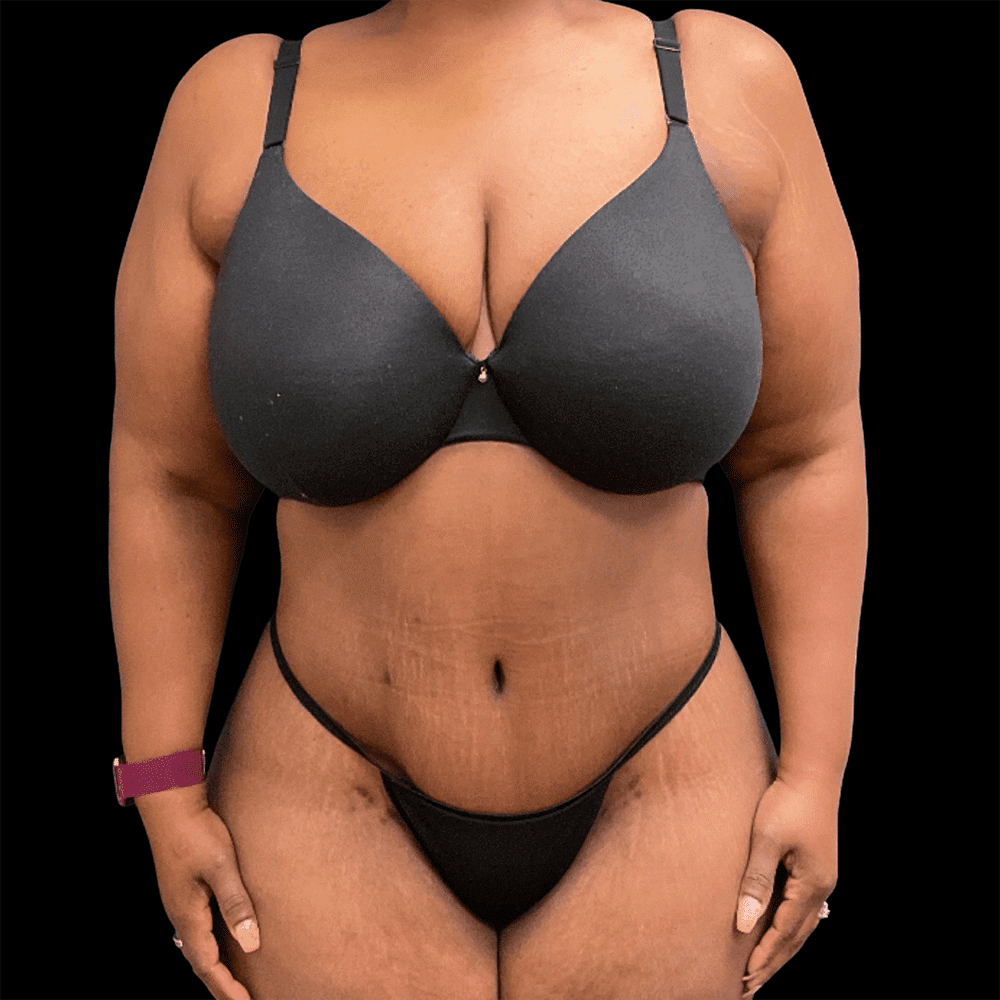Lower Body Lift Surgery
Excess tissue around the torso, including on the abdomen, flanks, and back, may be causing you to feel uncomfortable in your body and dissatisfied with your appearance. This trunk tissue accumulation is typically the result of weight loss, such as after bariatric surgery, after natural major weight loss, or following pregnancy. Unwanted skin can ruin the attractive curves of your body and cause painful irritation and chafing. A lower body lift is designed to remove excess tissue from the torso, tighten loose abdominal muscles, and create more natural, defined body contours.
How Can Lower Body Lift Surgery Help?
The lower body lift targets excess tissue on the torso by placing discreet incisions along the abdomen, hips, and thighs. Through the abdominal incision, weak core muscles may be tightened to correct the appearance of a stomach pooch. Excess skin is trimmed away from the abdomen, hips, and thighs, and the remaining tissue is draped to highlight your new body contour. Buttocks sagging can be correct for patients that have lost butt definition. Liposuction may also be used to remove excess fat to improve body definition and curvature.
Target Treatment Areas
Abdomen
The abdomen is the most common area in need of correction during a lower body lift. Since the abdominal muscles are prone to laxity following weight loss, many patients find that a weak and flabby abdomen is preventing them from having the slim figure they desire.
Flanks & Thighs
Skin and fat accumulation around the flanks can result in unsightly and uncomfortable love handles, which affect your clothing options. The unwanted tissue can also occur down the thighs, preventing you from having a slender leg appearance and potentially resulting in painful chafing.
Back & Buttocks
Your lower body lift can be extended to target excess skin on the mid and lower back. Excess tissue here is most common in patients who have lost a massive amount of weight. If your butt also lacks attractive definition, it can be lifted and shaped during your lower body lift.
What do you desire?
Removal of Excess Skin
The collection of skin along the lower body is treated through well-placed incisions. Generally, an incision is created in the lower bikini line that runs to each of the hips and, in some cases, along the lower back. Excess tissue is carefully trimmed away to provide the smoothest results possible. The remaining tissue is shaped to highlight your body and provide a slender appearance.
Elimination of Unwanted Fat
Either liposuction or direct excision can be used to remove unwanted fat deposits from the lower body. Liposuction is often combined with a lower body lift to not only remove fat but also to create better abdominal definition and enhance the curvature of your body. Fat removal helps provide a more toned aesthetic for more attractive results.
Natural-Looking Results
Dr. Wilson is an expert in body contouring with the lower body lift, and he combines the most effective techniques to ensure the most natural-looking results possible. Incisions are concealed along the bikini line, so any scarring that develops is easily covered using clothing or swimwear. Skin is draped rather than pulled to naturally highlight the contours of your body. Liposuction can also be utilized to create realistic abdominal definition.
Lower Body Lift Concerns
Recovery
You will experience bruising and swelling in the treatment areas immediately following your surgery. Drains will be placed to prevent fluid buildup. You will be required to wear a compression garment for several weeks following your procedure to minimize swelling and improve healing. Most patients can return to work two to three weeks following their procedure. You may be able to resume your regular exercise routine six weeks after your surgery. Major healing should subside by eight weeks.
Pain
An anesthetic is provided during your surgery to eliminate pain. Patients may feel some mild discomfort for the first several days following their procedure. Oral pain medication can be used to treat any associated discomfort.
Scars
The extent of scar development will depend on the incision technique used for your lower body lift as well as your body’s natural healing process. Every patient heals differently, but if you do develop scarring, it is likely to fade over time.
Cost
The cost of lower body lift surgery varies from patient to patient. The extent of correction needed plus surgical fees, facility fees, and anesthesia fees can all affect the ultimate cost of your lower body lift. A more detailed quote will be provided during your consultation.
Before & After Photos


41 year old female had a lower body lift.
View Photo GalleryLower Body Lift Frequently Asked Questions in Huntsville, AL
What type of anesthesia is used during lower body lift surgery?
To ensure patient safety and comfort, lower body lift surgery is performed using a general anesthetic.
How soon after my weight loss can I undergo lower body lift surgery?
It is important that body lift patients are at or near their goal weight and have maintained a stable weight for at least three months. Additional weight gain or weight loss following a lower body lift can affect your appearance.
Am I a good candidate for a lower body lift?
Candidates for lower body lift surgery should be in good general health and have realistic expectations about their results. Patients seeking a lower body lift often have multiple folds of skin on their lower body that have become unsightly or painful as a result of dramatic weight loss.
Are there any risks associated with lower body lift surgery?
While complications are rare, they can develop. Some risks include fluid accumulation under the skin, numbness around the treatment areas, infection, bleeding, and blood clots. Most complications aren’t life-threatening, but you should seek medical treatment for most issues.
How long will the results of my lower body lift last?
A lower body lift permanently removes skin and fat from the body, providing long-lasting results. However, additional weight fluctuations can affect the quality of your results. Patients should maintain a healthy lifestyle that includes diet and exercise to ensure the quality of their results.


